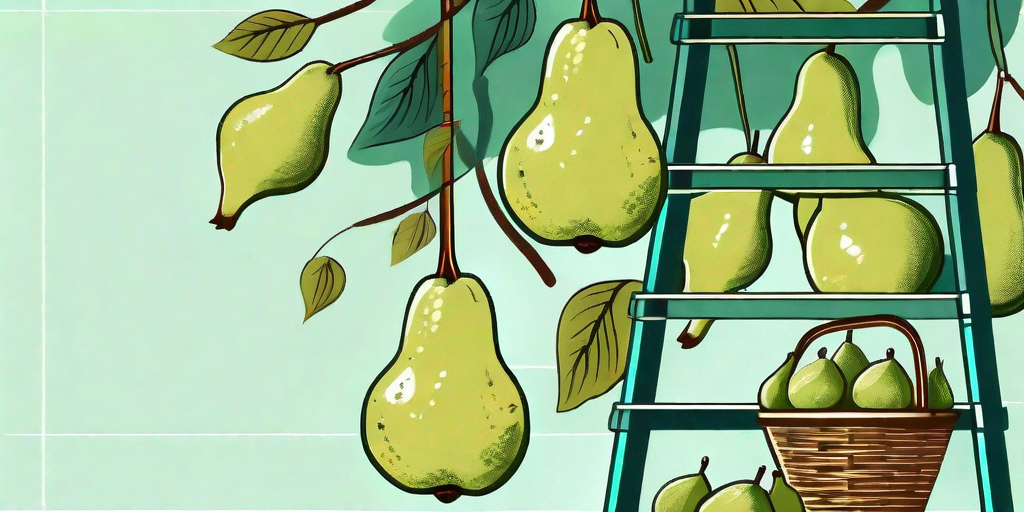
Welcome to the world of pear harvesting, where the fruits are juicy, the trees are tall, and the puns are, well, fruitful. Whether you're a seasoned gardener or a green-thumbed newbie, this guide will have you picking pears like a pro in no time. So, buckle up, grab your fruit picker, and let's dive into the pear-fectly wonderful world of pear harvesting.
Understanding the Pear Tree
Before we start plucking those juicy fruits, let's take a moment to understand the tree they're hanging from. Pear trees are deciduous, meaning they lose their leaves in the fall. They're also self-pollinating, which is a fancy way of saying they don't need another tree to bear fruit. Now, isn't that pear-ticularly convenient?
Pear trees can grow up to 20 feet tall and live for over 50 years. That's a lot of pears! They prefer well-drained soil and full sun, but they're pretty hardy and can tolerate a range of conditions. So, whether you're in sunny California or chilly Maine, you can still enjoy a bounty of home-grown pears.
Types of Pear Trees
There are thousands of pear varieties out there, but they all fall into two main categories: European and Asian. European pears are the ones you're probably most familiar with. They have that classic pear shape and include varieties like Bartlett and Anjou. Asian pears, on the other hand, look more like apples and have a crisp, juicy texture.
Choosing the right variety for your garden depends on your climate, soil, and personal taste. But don't worry, there's a pear out there for everyone!
When to Harvest Pears
Unlike other fruits, pears need to be picked before they're fully ripe. If you wait until they're soft and juicy on the tree, they'll be overripe and mushy by the time you eat them. Instead, pick them when they're still firm but have changed color. For example, Bartlett pears should be picked when they've turned from green to yellow.
The best way to tell if a pear is ready to be picked is by using the "tilt test". Hold the pear in your hand and tilt it horizontally. If it comes off the tree easily, it's ready to be picked. If it resists, leave it for a few more days.
Harvesting Techniques
When it comes to picking pears, technique is everything. Start by selecting a pear that's ready to be picked. Then, instead of pulling it off the tree, twist it gently. The stem should break off cleanly from the branch. If it doesn't, the pear isn't ready to be picked.
Once you've picked your pears, handle them with care. They're delicate and can bruise easily. Place them gently in a basket or bag and avoid stacking them too high.
Storing and Ripening Pears
Once you've harvested your pears, it's time to let them ripen. This can take anywhere from a few days to a couple of weeks, depending on the variety. To speed up the process, you can place the pears in a paper bag with a ripe banana. The banana releases ethylene gas, which helps the pears ripen faster.
Once your pears are ripe, they can be stored in the refrigerator for up to three months. Just make sure to keep them away from other fruits, as they can absorb their flavors.
Using Your Harvest
Now for the fun part: eating your pears! There are countless ways to enjoy this versatile fruit. You can eat them fresh, bake them into pies, or can them for later use. You can even make pear cider or pear vinegar. The possibilities are endless!
So, whether you're a pear enthusiast or just a curious gardener, I hope this guide has given you a new appreciation for this wonderful fruit. Happy harvesting!
FAQs
- When is the best time to plant a pear tree?
- Spring is the best time to plant a pear tree, after the last frost has passed.
- How long does it take for a pear tree to bear fruit?
- Most pear trees start bearing fruit 4-6 years after planting.
- Can I grow a pear tree from a seed?
- Yes, but it's easier and faster to grow a pear tree from a sapling.
Quick Tips for Pear-fect Harvesting
- Choose the right variety for your climate and soil.
- Pick pears when they're still firm but have changed color.
- Use the "tilt test" to determine if a pear is ready to be picked.
- Handle harvested pears with care to avoid bruising.
- Store ripe pears in the refrigerator, away from other fruits.











